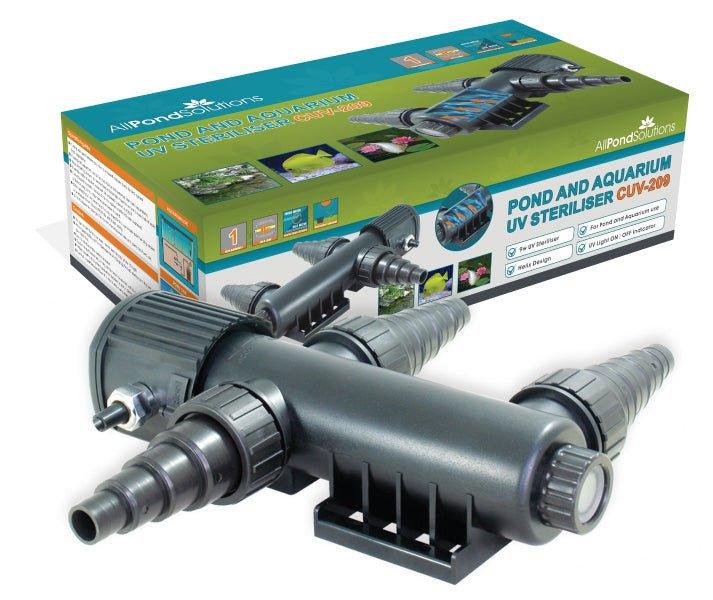Choosing the Right Aquarium Substrate for Your Aquarium
Substrate is an important part of setting up an aquarium fish tank. It does not just add to the aesthetic of the tank set-up, but it is an essential area for beneficial bacteria to cultivate. When shopping for aquarium substrate, you have probably noticed the sheer amount of options available to you. The range of materials, sizes and colours makes it difficult to make up your mind about which one to choose. What you might not know is that the size and material of your aquarium substrate can make a big difference to your fish tank livestock as well as your maintenance schedule. We’re exploring the different types of aquarium substrate and the different purposes that they serve:
Aquarium Gravel & Stones
Gravel is probably the most popular substrate option for many fishkeepers. The variation in shapes, sizes and colours make gravel suitable for a variety of set-ups. If you plan on buying fish tank gravel for your aquarium, it is a good idea to consider the livestock that you are keeping first.
Goldfish should never have gravel in their tank. Goldfish try to eat everything in sight and that includes their tank substrate. Gravel pieces can easily become stuck in their throats and this will cause them a lot of stress and even death if it is not removed in time.
Other species that will not appreciate aquarium gravel very much are bottom dwellers. For example, Corydoras, who filter through substrate in order to find their food, will find this task more difficult and the sharper ridges can damage their delicate barbels. Other fish, like the Kuhli loach, which burrow themselves in the aquarium substrate, can hurt their sensitive bellies if gravel is used in the tank.
Uneaten fish food and waste particles will also be a bit more difficult to remove from your tank if you use a gravel substrate. Unwanted particles can build up between the gravel and cause your water quality to suffer. If you do decide to use aquarium gravel, we recommend small size pieces (0.2 – 0.5mm) with smooth surfaces. Use a gravel vacuum regularly to avoid any waste gathering.
Aquarium Sand
Sand is not always considered by tropical fish keepers. When used properly, and in correct amounts, and is a great substrate that will not cause any problems. Unlike gravel, dirt particles will not seep through into the sand; it will stay on top, making it easier to clean. The best sand to use should have a medium grain size so that not to become compacted and anaerobic. Plants, goldfish, catfish and other bottom feeders will live very well in medium / large grain sand. The only drawback of sand is the possible development of anaerobic zones. This can be avoided by keeping fish species that burrow in the substrate and also regularly stirring up the sand.
Coral / Aragonite Substrate
Crushed coral / live reef aragonite substrate is almost never found in a tropical fish tank set-up. Most species of tropical fish require lower levers of pH in their water and crushed coral substrates will raise pH levels and harden the water. The only exception to this rule would be if you want to keep an African cichlid tank or a brackish aquarium, as these species live in harder water.
Be wary with crushed coral, this material can trap waste in the pores and eventually cause problems with your water quality.
Plant Specific Substrate
There are a lot of benefits to keeping live plants in your aquarium. If you plan on keeping a planted fish tank, it might be a good idea to use a substrate that provides extra nutrients to your plants. Specialised enriched substrates typically make it easy for plants to root themselves and slowly release nutrients to the water plant roots. Plant substrate also works to bind nutrition in the water along the bottom layer. Removing nutrition from water reduces the risk of undesirable algae growth. Plant-specific substrates can be used as the main substrate or underneath sand or regular gravel.
No Substrate
Some fishkeepers prefer having bare bottom fish tanks. Although bare tanks are not as natural or visually capturing, having no substrate can make cleaning a lot easier. Many people that keep goldfish opt for a substrate-free set-up for maintenance ease. Goldfish are quite messy fish so it is more convenient to not have a substrate that will trap waste and require more cleaning.
Substrate Colour
Every fishkeeper will have differing opinions about aquarium gravel colour. The benefits of a natural coloured gravel/stone are that it is closest to what would appear in the fish’s natural habitat. Fish are adaptable creatures and will not experience any problems due to colourful substrate. As long as your fish tank water is well looked after and your fish are taken care of, choose whatever shade of substrate you desire.
How Much Substrate Should Be Used?
A general substrate rule is to have a depth of approximately 1.5in – 2in. If you plan on having plants with strong lengthy roots, you will need to consider adding a bit more substrate depth.
Sand depth will be slightly less in order to avoid problematic anaerobic patches from forming. A sand substrate should generally have 1-1.5in depth.
The formula for calculating required substrate/gravel for your aquarium:
To work out how much sand or gravel you'll need to buy in order to achieve a two Inch (2") gravel depth in your fish tank, please use the following formula:
1) Multiply tank length by tank width (in inches); Example: 47" in. x 19" in. = 893
2) Divide the answer by 10; 893 / 10 = 89.3
3) Convert to kilogrammes by dividing answer by 2.2; 89.3 / 2.2 = 40.5kg required.
